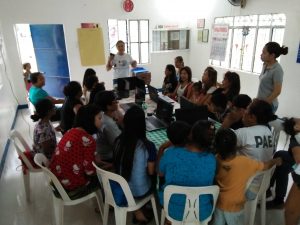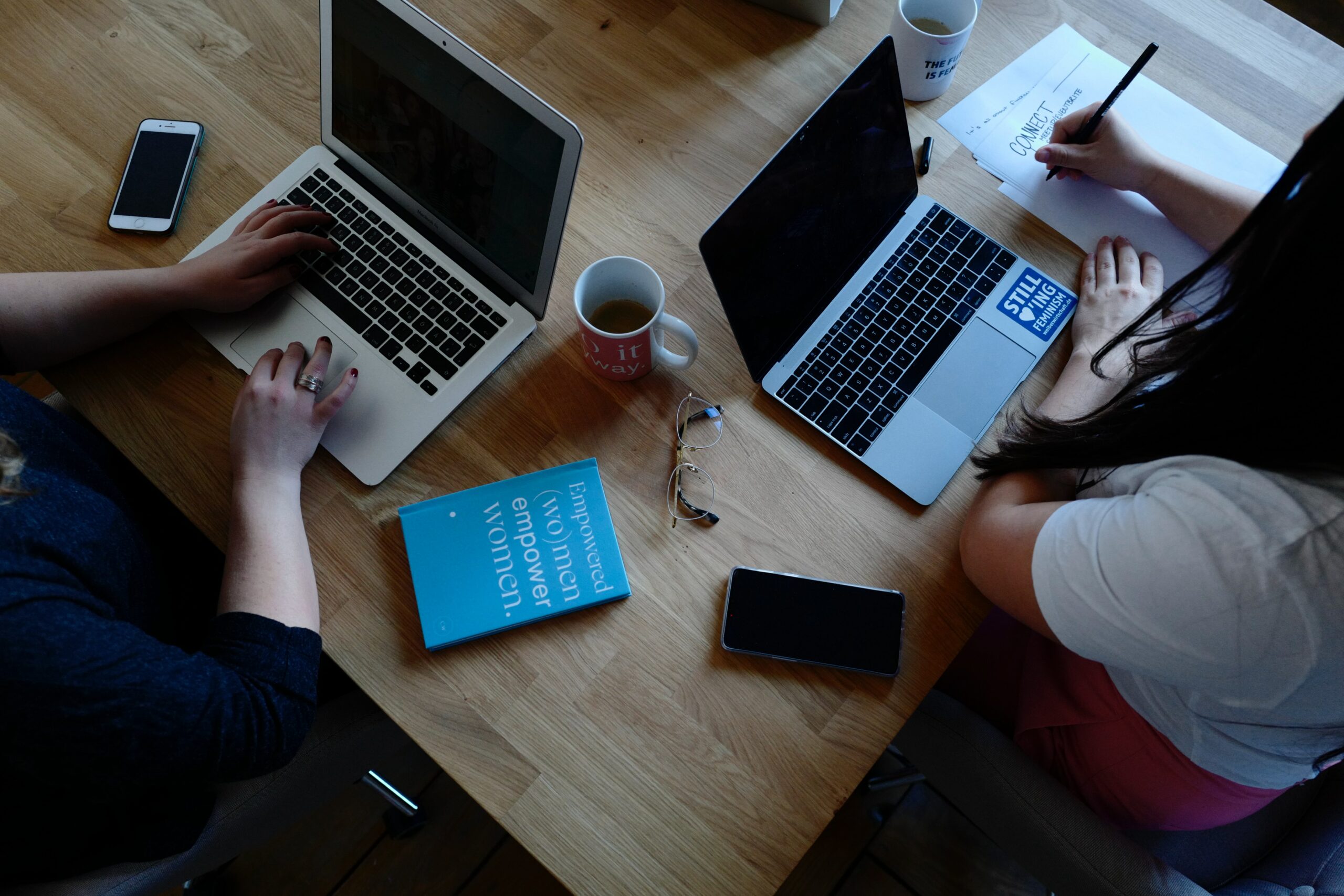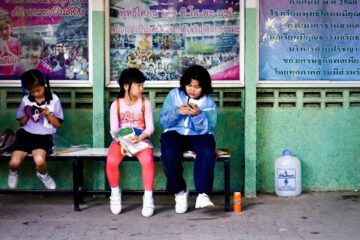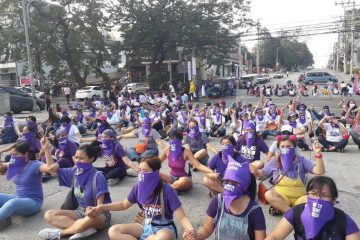EXECUTIVE SUMMARY |
 Generally, Digital Literacy is the set of competencies required for full participation in knowledge society. It includes knowledge, skills and behaviors involving the effective use of digital devices such as computer desktops, laptops, smartphones and tablets for the purpose of communications, seeking job opportunity, expression, collaboration, education and advocacy. While digital literacy focused on digital skills and stand-alone digital devices, the focus has shifted from stand-alone to network devices including the Internet and social networking sites like Facebook.
Generally, Digital Literacy is the set of competencies required for full participation in knowledge society. It includes knowledge, skills and behaviors involving the effective use of digital devices such as computer desktops, laptops, smartphones and tablets for the purpose of communications, seeking job opportunity, expression, collaboration, education and advocacy. While digital literacy focused on digital skills and stand-alone digital devices, the focus has shifted from stand-alone to network devices including the Internet and social networking sites like Facebook.
In view of this, the Foundation for Media Alternatives, through its Gender & ICT Program and with support of World Wide Web Foundation, Bagong Henerasyon Partylist headed by Congresswoman Bernadette Herrera – Dy, the Department of Information and Communications Technology – Tech4ED Program, Greater Victory Heights of Barangay 180, North Caloocan, a 1-day Basic Digital Literacy Training was held to twenty one (21) women and young girls who are members of Nagkaisang Tinig at Hakbang ng Kababaihan – Caloocan.
The Basic Digital Literacy Training aimed to equip women and young girls with knowledge, skills and proper behavior and attitudes in the use of information and communication technologies (ICTs) needed to access information, to pursue and develop new social and economic opportunities for themselves, their families, and their communities.
INTRODUCTION |
The participants together with the facilitators were gathered at the Greater Victory Heights Assembly Hall and seated together. Christina Lopez, program officer for Gender and ICT welcomed the participants and some barangay officials and introduced the objective of the training.
Natividad Pilipina, president of Nagkaisang Tinig at Hakbang ng Kababaihan – Caloocan also gave her opening remarks and highlighted the importance of women’s advancement in the digital age. “Tayong mga kababaihan na nasa laylayan ay nararapat din umangat sa usapin teknolohiya at magkaroon ng kaalaman kung paano ito makakatulong sa pang-araw-araw nating buhay. Kung ang mga anak natin ay nakakasunod sa galaw ng teknolohiya at may angking kagalingan sa paggamit ng gadgets, dapat ganoon din tayo. Sabay-sabay tayo aabante para sa sarili nating kaunlaran,” Natividad said. The participants agreed to her statement and get applauded.
EXPECTATION SETTING |
Everyone introduced themselves by stating their name and expectations for the training.
Below are the common expectations that were mentioned during the preliminaries:
General Expectations |
The participants would like to apply the knowledge and skills they will acquire in the training and able to become literate in using technology / digital devices like laptop and mobile phones.
Some specific expectations that were mentioned are as follows:
- To learn how to use and operate the computer.
- To apply job or seek employment opportunity.
- To help their children in doing their assignments using Google or the Internet.
- To gather information about government services and have access to their programs.
- To learn how to get an online access and find contact services in government websites:
- DSWD: Get online access to 4Ps program and learn about other benefits or services
- SSS: to know the number of contributions and to know the requirements of loan services.
- NBI & DFA : to set an appointment to get NBI clearance and passport
- Landbank: to learn about the online banking system
HOUSE RULES SETTING |
Facilitators set house rules to maintain the orderliness of the training and also take full responsibility of taking good care the borrowed devices for the training. Here as follows:
- Respect each other’s view and agree to listen to other’s full opinions or ideas and not react immediately.
- Agree to arrive on time after lunch break and snack break.
- Photo-taking is only allowed when consent is given.
- Do not hesitate to ask questions if things are unclear and wants to clarify something related to the topic.
- There is no right or wrong answers.
- Give others a chance to use the devices. Sharing is giving.
- Laptops and internet connectivity will one be used for hands-on training not for social media-related activity.
MORNING SESSION |
TOPIC 1: WHY IS IT IMPORTANT TO KNOW HOW TO USE A COMPUTER?
Facilitator began the program by asking the participants why computers are important nowadays and why people should learn to use it. According to them, computers are being used for easy and fast transaction. It is also use to connect with loved-ones who are living faraway. Through computer, their children can easily find information for their assignments. Some government offices offer programs and services using a computer-based system like filing application or renewal of some important documents.
Facilitator agreed to participants’ inputs. It was also added that computers and other digital devices like laptop and mobile phones are both great tools for communication and online transaction. And nowadays, kid’s assignments are being done and submitted through online. Others also find basic information about health and job opportunities through the use of digital devices and internet. However, some users are not comfortable to use their devices because of lack of knowledge and/or skills on how to use it.
TOPIC 2: WHAT IS COMPUTER?
Prior the discussion, the facilitator asked the participants if they are familiar on the terms computer parts and its functions. Majority of them are only aware on terms “laptop” and “computer” but have no idea about the difference and its functions.
In a discussion, computer was described basically as an electronic device that is designed to work with information. It has the ability to store, retrieve and process information. Computer or laptop has the ability also to create, open, save and manage files and folders. This can also be used to create and send email and find information with the use of internet.
In order to understand the computer basics, all participants were informed that they will be using laptop and wireless mouse for a hands-on training. They were also informed that laptop has many parts that contribute its functionality and several models or designs. But facilitator emphasized that a laptop is setup somewhat similar to a desktop computer in that the casing section is mainly made up the parts that would be included in a desktop monitor and the bottom casing includes the main computer components that would be included inside the desktop computer itself.
To begin, the basic parts of a laptop computer are the LCD monitor screen, keyboard, touch mouse pad, battery pack and charger, built-in camera, wireless network connection also known as WIFI and bluetooth. Each part plays an important role whenever the person use it.
After introducing the basic concepts about the computer and its functions, participants were given the opportunity on how to open the computer laptop. Facilitators were properly guided by the participants. It was notable that most of the participants were very excited in hands on training. Some participants shared that it was their first time to use a laptop and fortunate to experience on how to open the laptop and explore it.
HANDS-ON TRAINING 1
In hands-on training, the facilitators explained the types of software. However, the facilitators only focused on WPS Office Software which currently installed and available in the laptop. It is a free source software and recognized as an alternative software to Microsoft Office. It is fully compatible and comparable to Microsoft Word, Excel and Presentation in order to create a document.
Participants familiarized themselves in WPS writer (alternative to Microsoft Word) before conducting typing test and practice. WPS writer is a class text editing application that comes with all the formatting tools required to create documents. This include everything from font styles and colors, support from columns and tables, paragraph formatting and more.
After the exploring the features of WPS writer, participants were tasked to do a typing test and practice.
TOPIC 3: INTERNET BASICS
One of the facilitators opened the discussion on internet basics. Internet is a useful source of information about news, sports, entertainment and alike because it changes along with the real-time events that occur in the world brings.
In this session, the participants learned the basic internet terms and how to get to a website. Through a hands-on training they were able to explore a website, use a search box and site map. Facilitators also guided them about the different types of browser and showed to them the logos/icons.
HANDS-ON TRAINING 2
Participants were tasked to open the Google site. The first thing they saw was the opening page of a Google site. It was explained to them that the home page usually provides general information about the site and directs to other pages.
The purpose of search box also explained that this is where they can type information that they wanted to search for. Facilitator asked them to type a question about the place of birth of “Jose Rizal”. In this session, participants became more excited and every one were given a chance to experience to search information about Jose Rizal. Participants shared what they have found. One of them shared that Rizal was born in 1862 in town of Calamba, Laguna. Another participant raised her hand and shared that Jose Rizal has nine sisters and one brother. Another one shared that aside from being a national hero, she learned that Rizal was a physician, scientist and writer. Another participant laughed out loud. When asked what she found about Rizal, she shared that Rizal was a womanizer.
When participants were asked about their hands on training experience, all of them said that using internet is very useful for looking a certain information.
Facilitators asked them to visit the government websites that they wanted to view. Majority of them opened the Department of Social Welfare and Development website and looked for Pantawid Pamilya Program websites. Most of the participants are beneficiaries of this government program and they wanted to know what other services they can avail. But during this session it was notable that most of them are trying to find information about their cash grants specifically the amount to received and schedule of release. Facilitator explained to them that the banking system for this program is not covered of the website. Basically, their concerns can be found in a website of their respective bank institution. In order to access the online banking facility, the person with internet access needs to register with the institution for the service and set up a password and other credentials for verification.
Two participants visited the Social Security System website to check their monthly contributions and to know if they are eligible for loan. In order to check their SSS contributions and account online, facilitator asked them if they have unified ID from SSS and if anyone of them have signed up online as a member. Unfortunately, no one of them won’t able to secure the unified ID. Facilitator advised them to visit the SSS office to update info and request unified ID.
But facilitator guided them where they can found the list of requirements on how to apply SSS loan.
For participants who want to renew and/or apply NBI clearance, facilitator shared that applying or renewing NBI clearance has made available through online. Applicant should fill out the online form, print and bring to any NBI clearance center. A person may also schedule his/her personal appearance through the same form.
For Passport applicant, the Department of Foreign Affairs has made an online passport application system with scheduling and appointment for the convenience of everyone residing locally and/or abroad. This is applicable both for first timer and to those for renewal.
TOPIC 4: CREATING EMAIL ADDRESS
In order to succeed in any online transaction, email address is needed. Facilitator shared that in the digital world, email is the primary means of communicating with others. Email is being used for logging in Facebook, filling up the online form, sending online messages, etc.
In order to understand what email is all about, the facilitator briefly discussed its key concept. Generally, an email address is the address of an electronic postbox that can receive and send email messages on a network. An email address has the format of a person’s username followed by “@” sign and domain. In creating email address, it is important for the particpants to understand that only certain characters are allowed for email address names (i.e mostly letters and numbers as well a few punctuation mark such as the period).
Participants were asked who among of them have email address. Majority of them have email address but verbalized that their children were the one who created it. Their email addresses were used for Facebook purposes only. Participants later asked where and how do they get an email address.
HANDS-ON TRAINING 3
Facilitator shared that they will get an email address through web-based email service like Gmail, which is one of the Google services.
Participants were asked to go to search box and type www.gmail.com or mail.google.com. Then asked to clicked “create account” and fill out the information needed.
TOPIC 5: HOW TO BE SAFE ONLINE?
To keep their account safe, the facilitator shared common strategies such as combination of big and small letters, turning the letters into numbers, using symbols and/or special characters and never affiliate your password to your personal life and things known about you especially those information that are visible, available and linked to your online identity.
Facilitators also shared its initiative related to countering cybercrime, particularly the online gender-based violence.
- 1.Take Back The Tech!Philippines is a local campaign of the Take Back the Tech global initiative and FMA is the lead campaigner in the country. It aims to provide a venue for women and girls to critically engage in various ICT-related development, tools and processes particularly in relation to VAW; enhance and strengthen the capacity of women and girls and gender organizations towards strategic use of ICTs.
- 2.Take Back the Tech PH and Women’s Rights Online Philippines Facebook pages where they can get updates and leave message for cases.
Facilitators also left the contact number and email address in case they want to seek help regarding online gender-based violence experiences.
WAY FORWARD
The need for digital literacy for women is essential in the digital age. Technology is the a primary way to scale up solutions in accessing information and bridge the gaps. Whether they are used for education, healthcare, citizen services, financial services or any other basic needs. Technology and connectivity can make a big difference to the socio-economic levels of women in the community.
The women’s group is interested and hoping for a second training for using the online platform for livelihood and other government e-services.
A dialogue or meeting with Tech4Ed – DICT and Congresswoman Bernadette Herrera – Dy should be arranged for possible partnership and discuss how can we help women in the community to empower themselves using ICTs and the internet.
A post-evaluation with the community should also be conducted to be able to know if the training is useful for them and also to know if they find easy or difficult to search information online.
The training evaluation process has the potential to provide and obtain useful information needed in order to improve and measure the effectiveness of the facilitator, training program delivery and its content.
Here are the highlights of the post-evaluation conducted to the participants on November 30, 2017 at Greater Victory Heights of Barangay 180, North Caloocan.
- Women were able to help their children in their assignment using Google search. Two of them shared that they were able to search the different types of music instruments and scientific names of tropical plants.
- Majority of the participants are members of 4Ps and most of them regularly view the DSWD websites using their smartphones to get updates.
- Two women were able to renew their NBI clearance; 1 went to POEA website to seek possible job opportunity in abroad.
- Participants gained self-esteem after the basic digital literacy training.
- For the participants who have existing email addresses, they eventually changed their password and applied some techniques when choosing the secured one.
- Majority of them are using and accessing internet thru PisoNet and Mobile phones.
- One of the community leaders shared that the group is planning to establish an office. They are now talking with HOA officers for possible assistance and partnership.
- The participants are hoping to have one unit of PC for the organization so they are able to practice their computer skills and be useful as well for the children who would like to do their assignments online.
- The group also requesting another schedule of digital literacy training for those who were not able to attend and those who expressed interest to learn.
- Women also requested if they can help them by providing digital skills training focusing on livelihood.
![]()



0 Comments